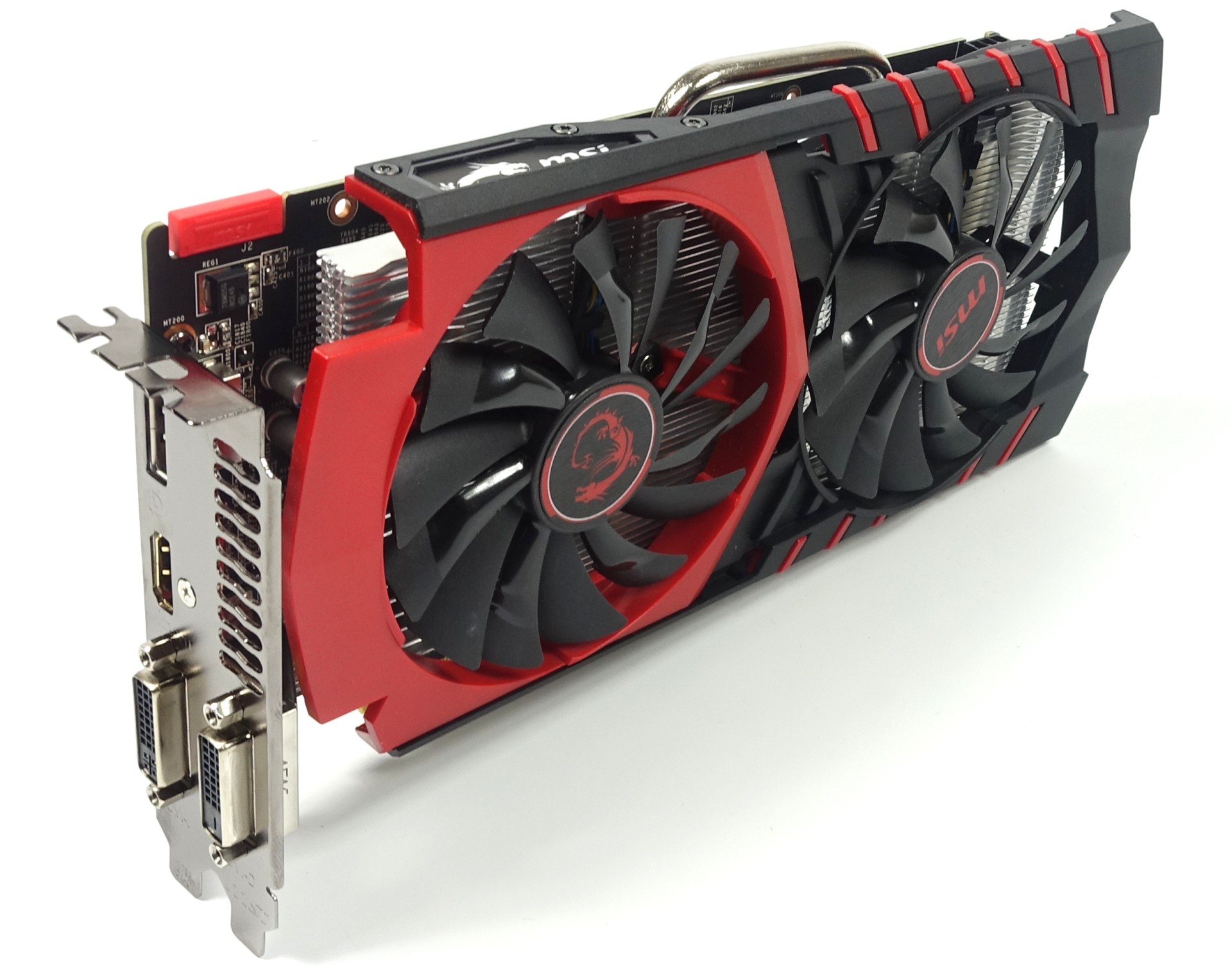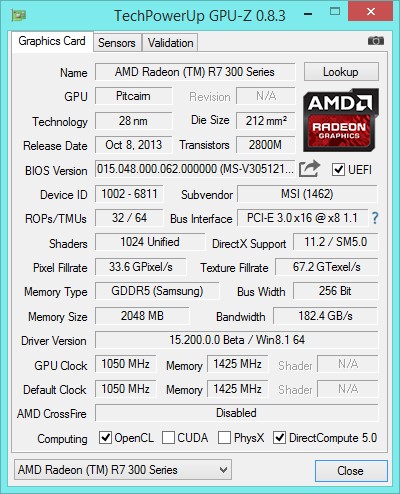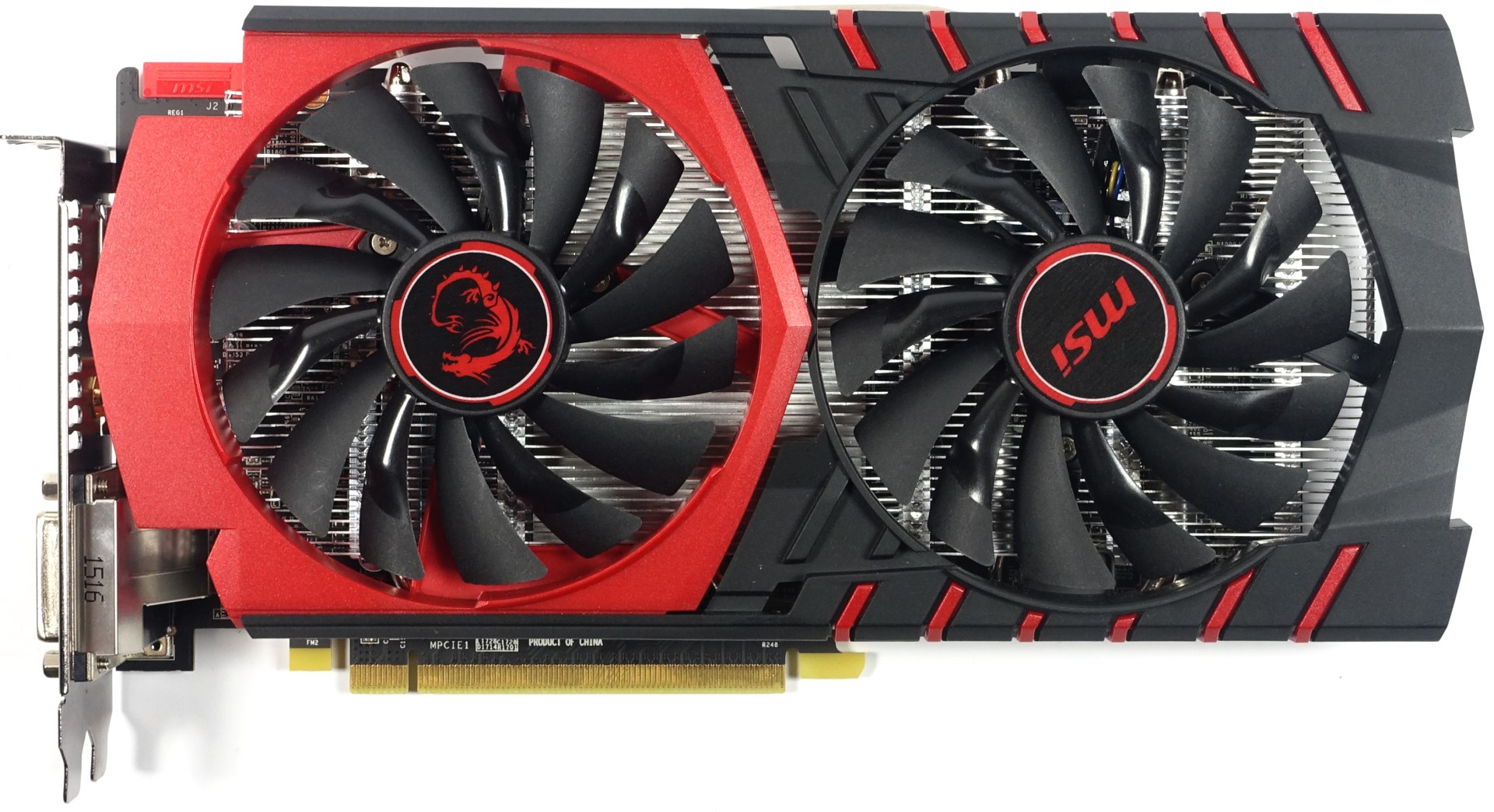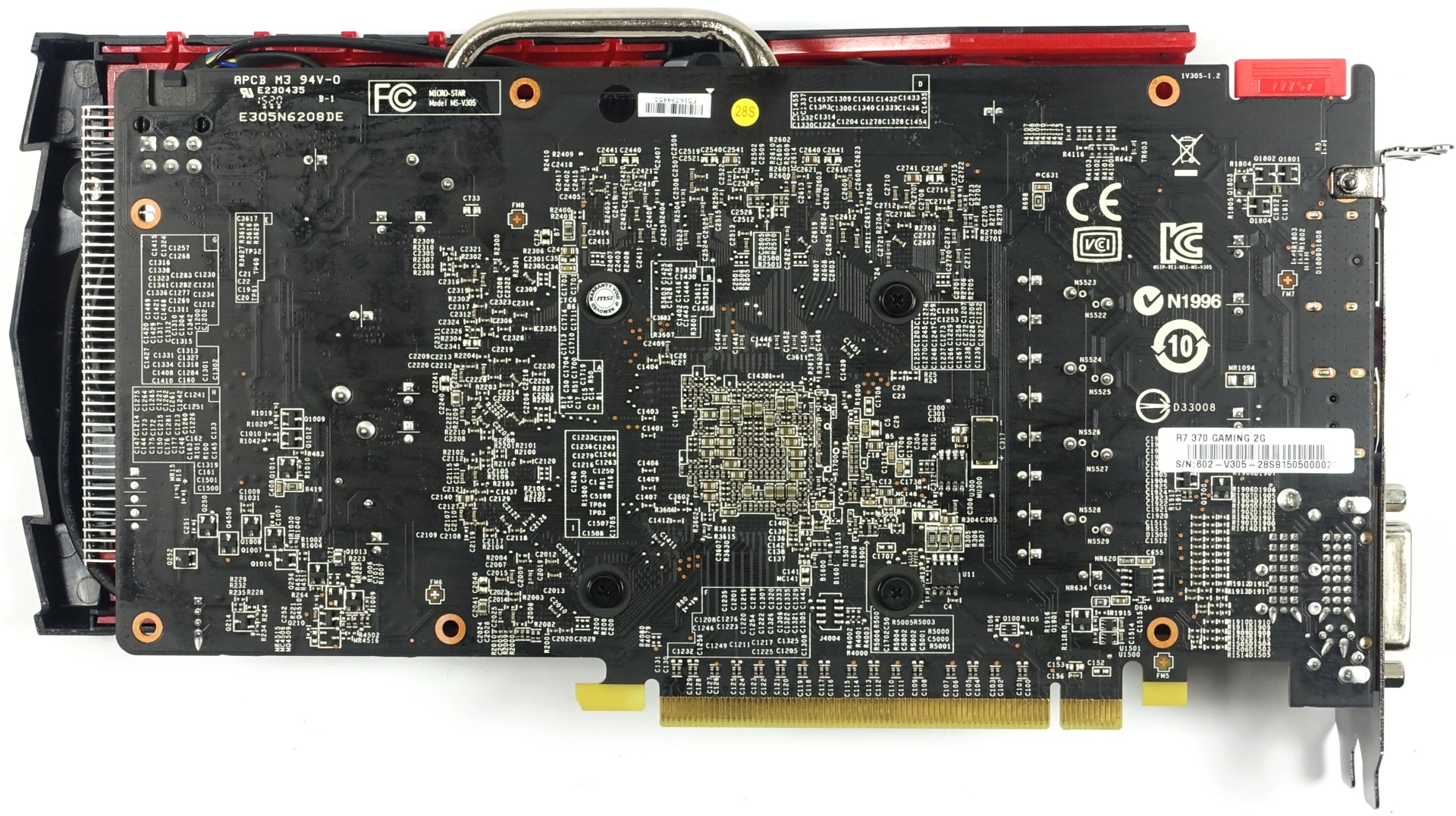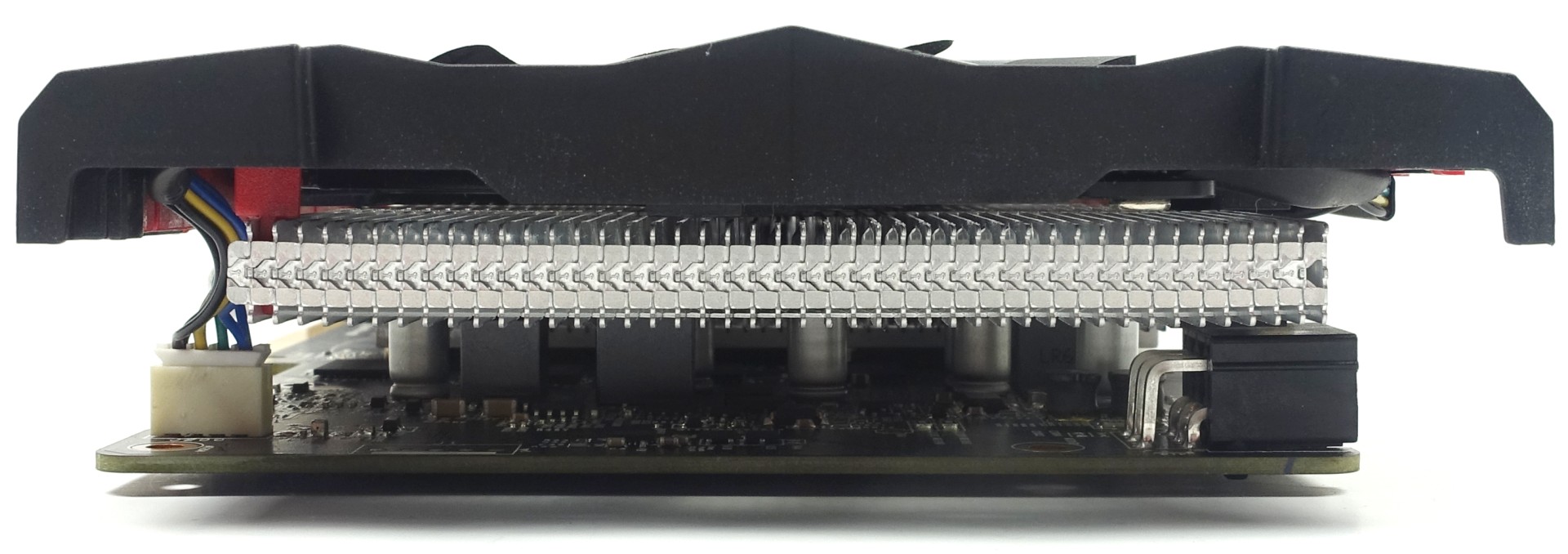AMD Radeon R9 390X, R9 380 And R7 370 Tested
AMD's 300-series Radeons dropped today, and we've got three MSI cards in the lab: the R9 390X Gaming 8G, the R9 380 Gaming 2G and the R7 370 Gaming 2G.
MSI R7 370 Gaming 2G
Pitcairn apparently refuses to retire. MSI’s R7 370 Gaming 2G comes in 100MHz higher than its R7 270 Gaming 2G predecessor’s gaming mode.
It also becomes apparent that the manual overclocking limit is similar to the older models. Both the Sapphire HD 7850 Dual-X with 2GB GDDR5 and the HIS R7 270 IceQ X² Turbo Boost Clock end up with a clock rate of 1150MHz.
The actual performance increase is well below what the specifications would suggest, since the high stock frequency is significantly above Pitcairn’s sweet spot.
The memory is supplied by Samsung again. It’s clocked at 1425MHz, which is a marginal improvement over the MSI R7 270 Gaming 2G’s 1400MHz GDDR5. We were able to get it to 1500MHz, but any more than that resulted in marginal stability.
| MSI R9 390X Gaming 8G | |
|---|---|
| GPU Clock Frequency: | Stock: 1050MHzMaximum Stable OC: 1150MHz |
| Memory Clock Frequency: | Stock: 1425MHzMaximum Stable OC: 1500MHz |
| Cooler: | Zero Frozr, Two Fans (94mm Fan Blades)3x 6mm Heat Pipe (Nickel-Plated)Vertical Fins, Two Axial Fans, Semi-Passive OperationNo Back Plate |
| Connectors: | 1x DVI-I (with Analog Signal), 1x DVI-D, 1x HDMI, 1x DisplayPort |
| Power Supply: | 1x 6-Pin PCIe |
| Measured Power Consumption: | 12W (Idle)107W (Gaming)147W (Stress Test) |
| Installed Dimensions (L x H x D): | 25.8 x 12.5 x 3.5cm + 0.5cm Back PlateRequires Two Slots |
| Weight: | 531g |
| MSRP: | Unknown |
GPU-Z shows the best possible version of the small Pitcairn GPU that still makes sense.
The processor can be cooled fairly easily by the relatively powerful thermal solution. It’s too bad that this small version of Pitcairn is all that’s under the hood. An AMD Radeon R7 370X would have been a better option for this launch.
The heat sink under the slightly modified cover has a relatively simple design. It consists of three 6mm heat pipes, aluminum fins and a body made of a single block. That’s all that’s really needed, though.
Get Tom's Hardware's best news and in-depth reviews, straight to your inbox.
MSI opts not to include a back plate. This is really no loss. If anything it’s an acceptable cost-cutting measure. It’s easy to see from the bottom that the voltage regulators aren’t cooled at all. This is puzzling for a graphics card that turns off its fan at idle or low loads. We’ll see the consequences of this decision when we get to our infrared temperature measurements.
In its third generation, the graphics card still has one 6-pin power connector, which is still completely sufficient.
The sink’s fins are arranged horizontally, which makes sense considering the single-block cooler and low amount of waste heat. With this setup, some of the dissipated thermal energy is exhausted out the back of the slot panel.
Once again, there’s exactly one UEFI BIOS to be found. The DVI-I connector provides an analog signal, whereas the second DVI connector is exclusively digital. There’s also an HDMI and a DisplayPort connector.

Igor Wallossek wrote a wide variety of hardware articles for Tom's Hardware, with a strong focus on technical analysis and in-depth reviews. His contributions have spanned a broad spectrum of PC components, including GPUs, CPUs, workstations, and PC builds. His insightful articles provide readers with detailed knowledge to make informed decisions in the ever-evolving tech landscape
-
Grognak 390X at 4K is the only one showing anything that could be called an improvement and that's entirely due to the additional RAM, which you can already get on a 290X. I fear for the future.Reply -
envy14tpe Again I am left disappointed....AMD please stop doing this to me. So what I learned is the 390X is the same as the 290X at 1440p or below (which is 95% or more of gamers) and the 390X only excels at 4k but still only on par with the 980 (non ti). Looks like I'm abandoning AMD for my next GPU. damn it.Reply -
FormatC ReplyWhy did you ignore 390?
I can only test what I have. Too less samples :(
The 390X is'nt a bad card per se - it depends a lot at the price and your personal preferences. -
fudoka711 Wait, I think I'm misunderstanding something. Is the 390x a rebranding of the 290x, but costing $100 more??Reply -
HideOut ReplyNice to see 980 Ti still stomps everything, glad I bought one... a wise investment!
These are rebadge cards, their new cards are due out in days. Fanboy -
de5_Roy MSI R9 390X Gaming 8G's texture fillrate in the spec table (1st page) may have been incorrect. the gpu-z screeny shows 193.6 GTexels/sec.Reply
